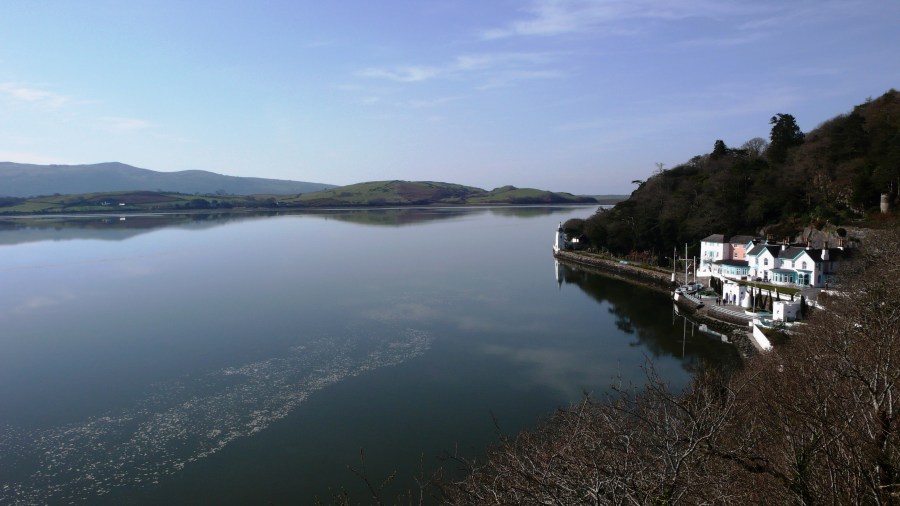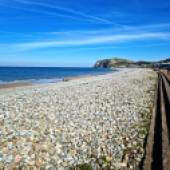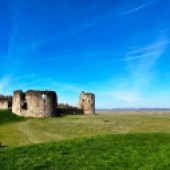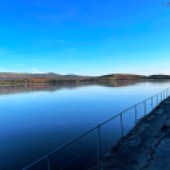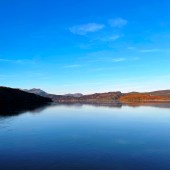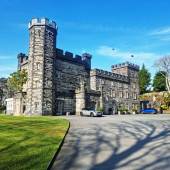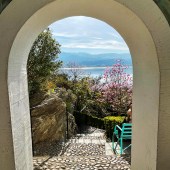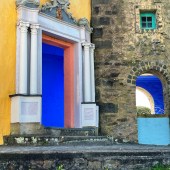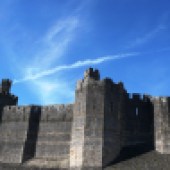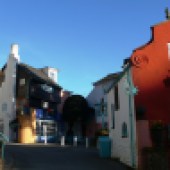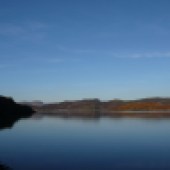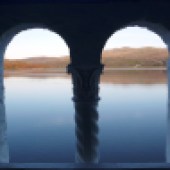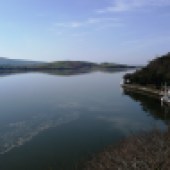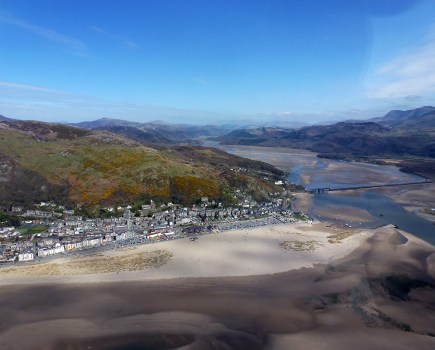Home of the legendary red dragon and the finest castles in Europe, KATE LORD BROWN visits the dramatic north Wales coastline.
This is surely one of the most romantic coastal road trips in Europe. Tourists have been drawn by the picturesque mountains, spa towns and castles of the north coast of Wales since the 18th century.
Wide sand beaches and sparkling water spread invitingly below soaring headlands dotted with bright gorse and dense pine woods. On lavender hills, sheep graze gently in lush dry-stone walled pastures. The landscape is at once peaceful and dramatic. Jan Morris in The Matter of Wales described her beloved home as “damp, demanding and obsessively interesting”. As one of the wettest corners of Europe it is also one of the greenest, and you are never more than 50 miles from the sea.
The sun shone for us when I visited. The north coast is exceptionally varied, and I loved the drama of the mountains descending right to the sea. Much of the beauty of the seascapes comes from being able to see hazy land on the horizon – curving bays, or the distant coast of Ireland, and closer by, Anglesey’s shore.
There is little more evocative or romantic than a castle on the coast, and there’s said to be more per square mile in Wales than anywhere in Europe – some 600 or so. We stopped first at Flint, whose great ruined medieval castle once brought craftsmen from all over the country, and ships with materials from France and further afield.
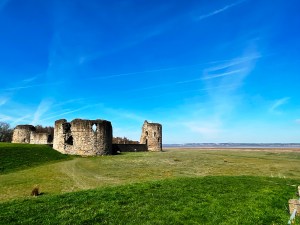
It was the first of Edward I’s iron ring of castles, and you can still see the strategic grid system in the town’s streets. The castles were set a day’s march from one another, the most ambitious scheme in medieval Europe. Many of them were designed by James of St George d’Esperanche and are now World Heritage sites.
Nearby, we stopped at Holywell’s legendary shrine of St Winefride. We had the place to ourselves, but pilgrims have flocked to the ‘Welsh Lourdes’ for healing since the Middle Ages and it is mentioned in Sir Gawain and the Green Knight. Prized even by the Romans for the water’s ability to cure gout and rheumatism, a fine 15th century Renaissance canopy shelters the miraculous waters, and you can still bathe in the pond at certain times of the day.
We drove west from here, through the cheery family resorts of Rhyl and Prestatyn. These towns sprung up during the Industrial Revolution when the advent of trains allowed tourism to reach the coast. Seven miles of sand join the two resorts, and Colwyn Bay’s wide sand beach is still the place to head for water sports.
Further along the coast, the enterprising Mostyn family developed Llandudno in the 1840s. It is a thriving pleasure town still. The original fishing village was left in peace, and an elegant crescent with cheery Victorian terraces behind was built along the bay to embrace a wide and welcoming beach.
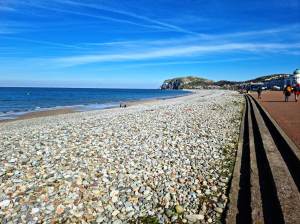
Described as a “beautiful haven of peace” by Queen Elizabeth of Romania it drew the great and the good, including Napoleon III and Bismarck. People flocked to see fashionable performers at the pier’s Pavilion, and it is still an impressive place to enjoy entertainments.
Nearby you can scale Great Orme’s vast limestone hill. You can reach the summit by car, tram, cable car or on foot and enjoy the best views you’ll find of the north Wales coast. The summit complex and cafe is open until November. Much of Wales’ treasure lies below ground with seams of gold, lead, tin, iron, coal and copper. Here you can also explore the atmospheric ancient Bronze Age mines (open March-October, daily).
Along the coast, Conwy’s castle was built astonishingly fast between 1283-1287, for today’s equivalent of £45 million. On the way into town, keep an eye out for the elegant suspension bridge by Thomas Telford. This was once the finest walled town in Europe, and with the protective blue mountains behind and the sea in front it still exudes an uncompromising toughness.
The town walls are nearly complete, and they give the town a unique atmosphere. It would be easy to spend a couple of days here exploring the cobbled streets. (The castle is open 9.30am-6pm to August 31, 9.30am-5pm September/October).
This is a land imbued with Celtic folklore and stories recorded by Welsh druids and bards through the centuries. There are beautiful, atmospheric estates to explore nearby. Visit Bodnant’s famous gardens, or the Craflwyn Estate, and find Dinas Emrys, the legendary birthplace of the red dragon of Wales. Further along the coast at Penrhyn Castle at Bangor there are 60 acres of grounds to enjoy.
Perhaps the most impressive of all the Welsh castles lies along the coast. Begun in 1283, Caernarfon Castle’s 13 towers and enormous sandstone banded walls soar vertiginously above the quay. It is one of the great military monuments of Europe.
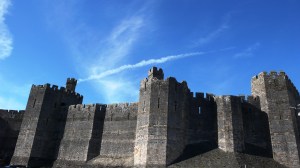
In 1969 King Charles was invested as Prince of Wales here, and the streets and harbour were bedecked with flags. As we walked along the quay, boats moored beneath the sheltering bulk of the castle bobbed gently in the peaceful water, halyards chiming in the breeze. These castle strongholds were designed as bastide towns and the streets of brightly coloured houses still seem to tuck under the protective wing of the castle.
We drove on to Portmeirion for the night. Jan Morris once said that “fizz is a Welsh characteristic” – a certain effervescence, passion and high spirits that I recognise from my Welsh relatives. If so, Portmeirion is the fizziest of places – a joyfully eccentric village created between Penrhyndeudraeth and Porthmadog.
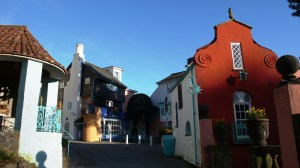
The architect Clough Williams-Ellis traced his lineage back to the princes of Gwynedd, and he set out to prove that development could at once be graceful, hedonistic and enhance the natural coastal environment. Portmeirion became a “home for fallen buildings”, saving and reconstructing structures from all over Europe – so you find a Jacobean town hall next to an Italian campanile and Welsh cottages.
It is eclectic and whimsical, spilling down the hillside to the Dwyryd Estuary. Its fame grew as setting for The Prisoner TV series, and celebrities including Noel Coward, (who wrote Blithe Spirit there), and the Beatles stayed during its heyday.
Many of the Grade I/II listed buildings are self catering cottages and hotel rooms, or there is a motorhome park on site. But after a road trip exploring North Wales’ finest castles, it seemed only right to end our trip by staying in one. Castell Deudraeth sits above the village, and has been recently renovated. The rooms are airy and comfortable, and after exploring the beautiful Gwyllt woods before dinner we enjoyed a fine meal in the restaurant of local beef and fish with one of Portmeirion’s own label wines.
Residents can enjoy exploring the village after hours, when the crowds have departed – an unforgettable experience full of magic. We ended the evening with a nightcap by the water, and a view over the moonlit coastline.
As Morris said, this “is a country of the heart”, and our drive home from the coast through Snowdonia National Park was breath taking. Come for the romance of the place, the castles and the coastline. It is a fascinating corner of Europe, steeped in history and blessed with natural beauty.
Welsh coast: walescoastpath.gov.uk
Cadw’s castles: cadw.gov.uk
Portmeirion: www.portmeirion.cymru 01766 770000
TEN AMAZING IDEAS FOR DAYS OUT
Boasting four mountain ranges, three Areas of Outstanding Natural Beauty, 250 miles of coast and four World Heritage sites, whatever the weather, there are plenty of exceptional days out in Wales:
- Enjoy a trip to the theatre at Llandudno.
- Explore Bodnant Garden – famed for its laburnum arch and rhododendrons.
- Get your culture fix at Pontio’s art, music and performance space in Bangor.
- Head up to Segontium Roman fort near Caernarfon.
- Join Cadw (Welsh for ‘to keep’) and enjoy 130 historic sites in Wales.
- Learn about the nature reserves of Morfa Harlech and Morfa Dyffryn whose sand dunes are home to rare plants and animals.
- Search snowdonia360.com to plan trips to zoos and zipwires.
- See Britain’s smallest cathedral at St Asaph.
- Try a dram of award-winning whisky at Penderyn Distillery, nr Llandudno (seven days a week, 9-5).
- Visit South Stack lighthouse on Holy Island, Anglesey’s most westerly point.
Feeling inspired to travel to Wales? Check out 10 of their best secret beaches here.

